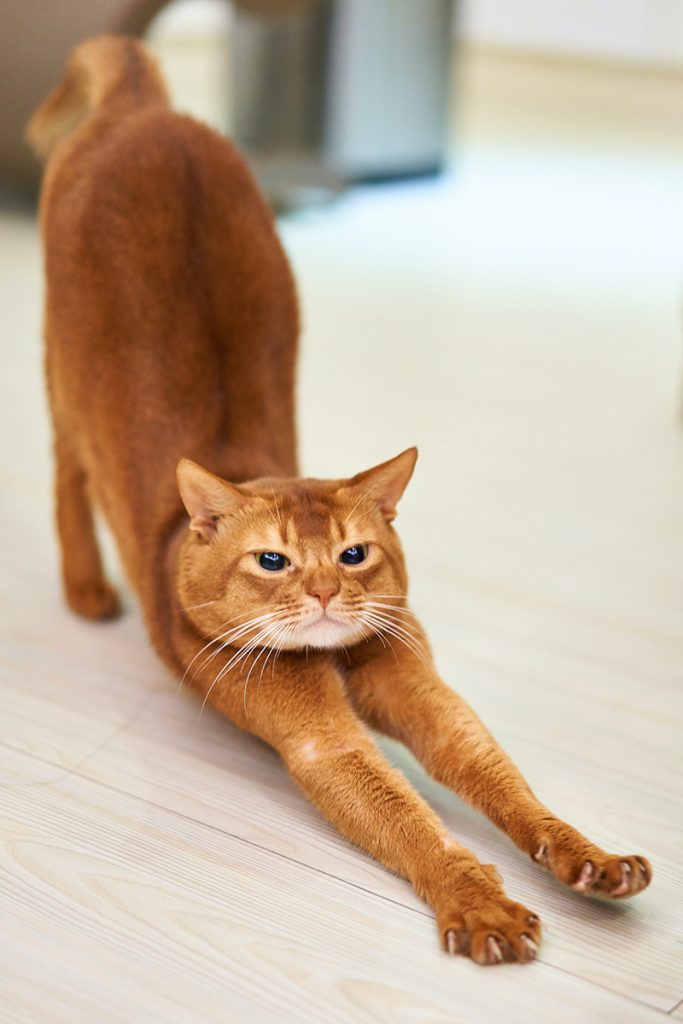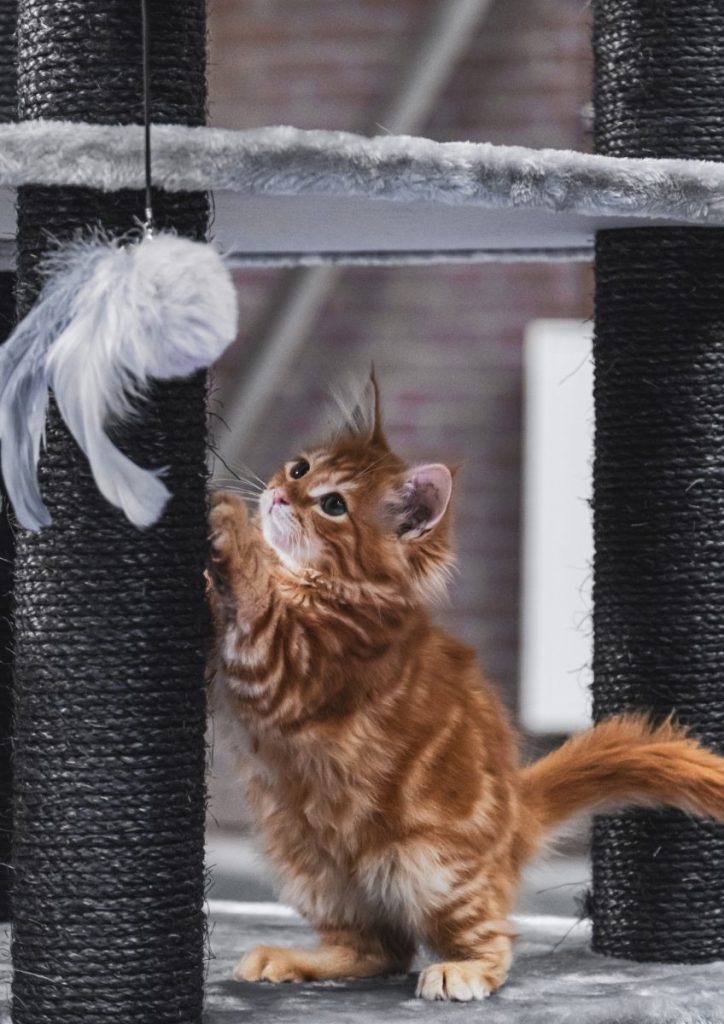
Why Do Cats Scratch the Furniture?
10 Aug 2020.
Cats claws are amazing things – helping our kitties climb, play and defend themselves. But they can be a source of stress for cat owners when kitties decide to sharpen them on the furniture. But why do cats scratch, and is there a way to control where and when they do it? Below, Cat in a Flat finds out.
Table of contents
Why do cats sharpen their claws by scratching the furniture?
All cat owners will recognise the sight and sound of your kitty having a good scratch. Cats like to repeatedly drag their front paws with the claws extended over a textured material. Scratching surfaces can range from wood to fabrics and woven materials. Unfortunately for cat owners, many kitties will choose their carpet, sofa or chair as their favoured scratching spot. Unwanted scratching can end up with ruined patches of soft furnishing needing expensive repairs and your home looking tatty.
So why do cats scratch their claws on rough surfaces? There are three main reasons.

1. Cats scratch to sharpen claws
Cats claws can become frayed and shed through use. Scratching claws against a surface can help remove the outer sheath of claws to keep them sharp and healthy. Sharp claws are essential for climbing and self-defence. Even if your cat is an indoor kitty, the instinct to keep claws in tip-top condition is powerful for these reasons.

2. Cats scratch to exercise
If you’ve ever seen a cat wake from a nap, you know they enjoy a good stretch. There’s a yoga pose named after our kitties for a reason! One of the reasons cats might enjoy scratching so much is that it exercises and stretches the muscles in toes, paws and legs.
3. Cats scratch to mark territory
Our furry friends also scratch items in their environment to mark it as part of their territory. A considerable amount of cat communication comes from odours. Kitties have scent glands between their toes and on the pad of their paw. When they scratch, pheromones are left behind, marking the territory as their own and leaving scent information for other cats to decipher. Claw marks left on trees or fences may also act as visual markers for other cats.
How can I stop my cat scratching my furniture?
Scratching in cats is entirely natural, and owners shouldn’t try and stop the behaviour completely, or reprimand their cat. It’s an instinctive action that helps keep cats’ paws healthy. But if your sofa is starting to look a little shredded, there are some quick solutions to try.
Cats hate some overpowering smells, especially citrus. Try spraying their favourite scratching spot with a spray scented with lemon, lime, orange or eucalyptus. Plenty of sprays are available to purchase, or you can create one at home using essential oils diluted in water. Using a scented spray has the advantage of covering the territorial pheromones that encourage your cat to scratch in that spot too.
You can also make your furniture or surfaces less appealing for claw sharpening by covering them in a different texture such as a sheet, foil or plastic wrap. If your cat’s scratching is partly due to stress, you could introduce a calming Feliway diffuser or spray to your home. Scratching can be a result of boredom too, so make sure to play with your cat as much as you can, wearing them out and making them happy and satisfied at the same time. Not only will playing with your cat help to reduce scratching, but it will also strengthen the bond between you and your fur baby.

Try a scratching post
Cat owners should combine any anti-scratching measures with the introduction of a new scratching surface your cat can use: a scratching post or pad.
Happily, there are lots of different scratching posts or pads available to suit your cat. To find the right solution, pay attention to how and where your kitty likes to scratch. Do they drag their claws over a vertical or horizontal surface or both? Every cat has a preference, so try and get a scratching surface to suit your kitty. It might take a few tries to figure out whether rope, cardboard or a different fibre suits them best. Try not to be too distracted about what looks the best and instead go for something with good reviews from other cat owners.
What makes a good scratching post or pad?
- Vertical scratching posts should be as tall as your cat when they are on their hind legs. A post of 60cm or more should work for most cats.
- Cat trees are often finished with material suitable for scratching but make sure the sleeping platforms are high enough to give your kitty enough room to extend their paws.
- Kitten-sized posts will quickly become too small for a grown cat so invest in an adult-sized post from the start.
- Make sure any post has a solid, substantial base, so it isn’t unstable or wobbly.
- Some posts have a vertical and horizontal surface and different materials to add variety. If you’re not sure what your cat will like, then one of these posts could be a good option.
- Older cats might prefer softer materials to scratch, such as carpet, as it’s easier on stiffer and weaker paws.
How can I encourage my cat to use their scratching post?
- Place the post next to furniture your cat already scratches, such as by your sofa.
- Encourage your kitty to investigate their new scratching spot by placing some catnip on the post or pad.
- Feliway has a spray developed to encourage your cat to scratch in the right place. Feliway Scratch cleverly uses cat pheromones release messages to your kitty about their territory and so where they should scratch.
- Reward Mr Whiskers for scratching in the correct spot with praise and an occasional treat. You could even place a treat on top of the post to encourage your furry friend to investigate.
- Drag your cat’s favourite toy over the scratching post to encourage them to engage their claws with its surface.
- Do not place your cats’ paws on the post as this can be off-putting and unpleasant for your kitty. Let your cat discover their scratching post themselves to help foster positive associations.
Note: if you have more than one cat, you should provide a scratching area and post or pad for each kitty.
Find out more curious kitty facts such why cats purr on the Cat in a Flat blog.
- cat behaviour
- cat scratch
- claws
- scratching
- why cats scratch


